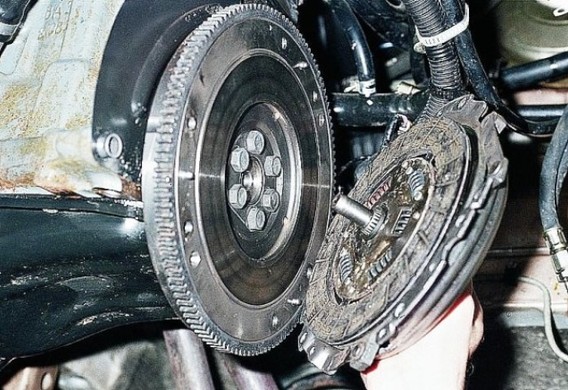
Many motorists heard the word "clutch", but not everyone knows what it means. How do we know that the clutch is boxing? What's the reason for the clutch and how to get rid of this phenomenon? Signs that the clutch is buxing
Signs that the clutch is buxing
The first signs that can be used to determine the traction of the clutch are the palpable smell of the gari and the slow speed set (especially noticeable on the rise). To test if you do not slip the clutch, you need to raise the handbrake when the engine is running and turn on the gear. After that, we need to slowly release the clutch. If the engine's stalled, that means the clutch is all right and there's no traction. If the engine continued to operate after the clutch pedal was released, the clutch shall be stalled.
The traction of clutch is not enough clutch or untimely withdrawal of springs.
The reasons why the clutch is Butch can be different, among them: High wear of the friction linings, too little pedal of clutch, oil caught on friction linings, failure or loss of elasticity of press springs. Wet clutch, what do I do?
- High wear condition of the friction linings,
- The clutch of the clutch too small,
- Oil of the friction liners,
- failure or loss of elasticity of press springs.
Wet clutch, what do I do?
A check of the reasons why the clutch can be engaged is to begin with the simplest: check the clutch of the clutch pedal and, if necessary, adjust it.
If the reason for the clutch is clutch in the fillings of the friction linings, they can be washed with kerosene and then dry and wet with sandpaper.
If you wear the friction linings, they should be replaced with the guest disc.
Sometimes the traction of clutch is caused by the rubber decal of the clutch actuating the clutch engaged in the operation. In this case, it is necessary to remove the master and work cylinders, disassemble and wipe the entire system with alcohol, replace the rubber parts that have broken and then clear the compensating holes and gather everything in reverse order. When this procedure is measured, fill the brake fluid and pump the brakes.
If the clutch is broken because the pressure springs have lost their elasticity (usually these are 10-year-old cars), then at least the springs themselves will have to be replaced, and the maximum is the clutch mechanism.







